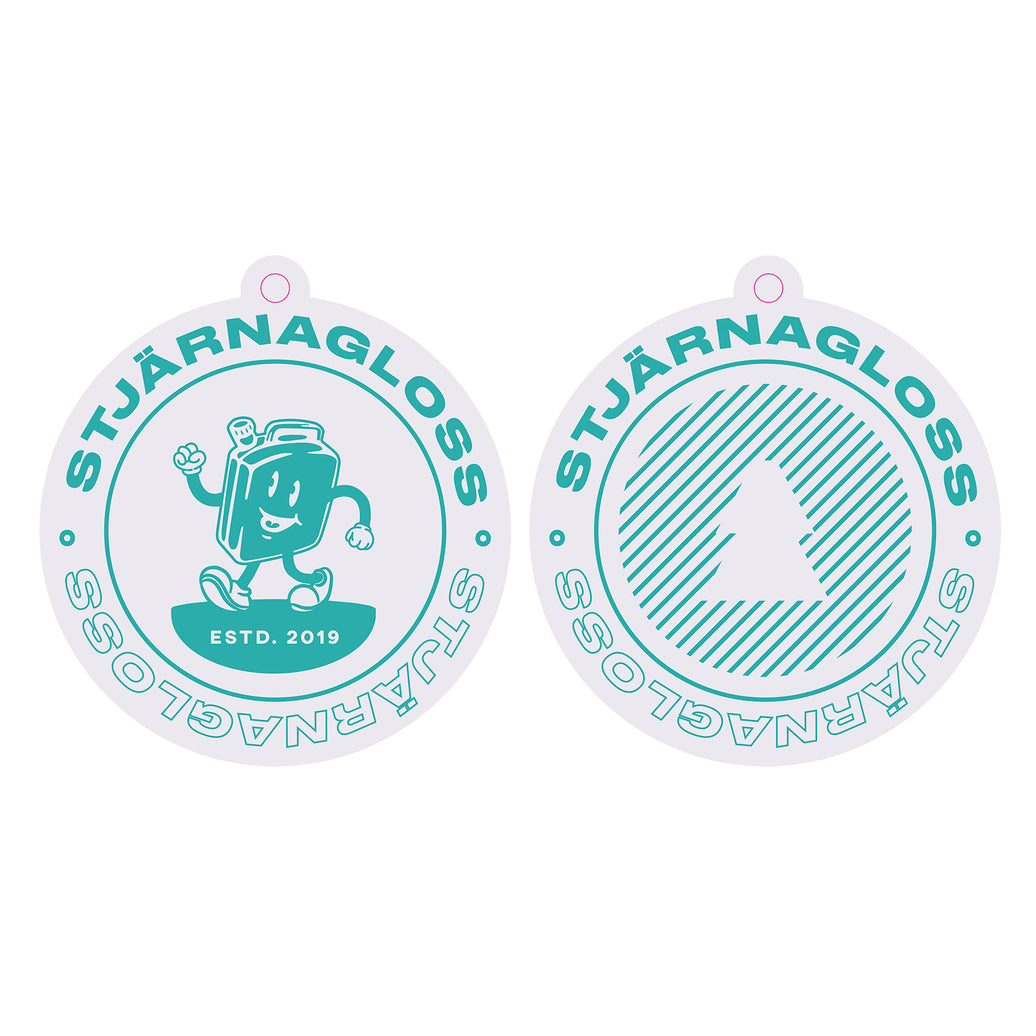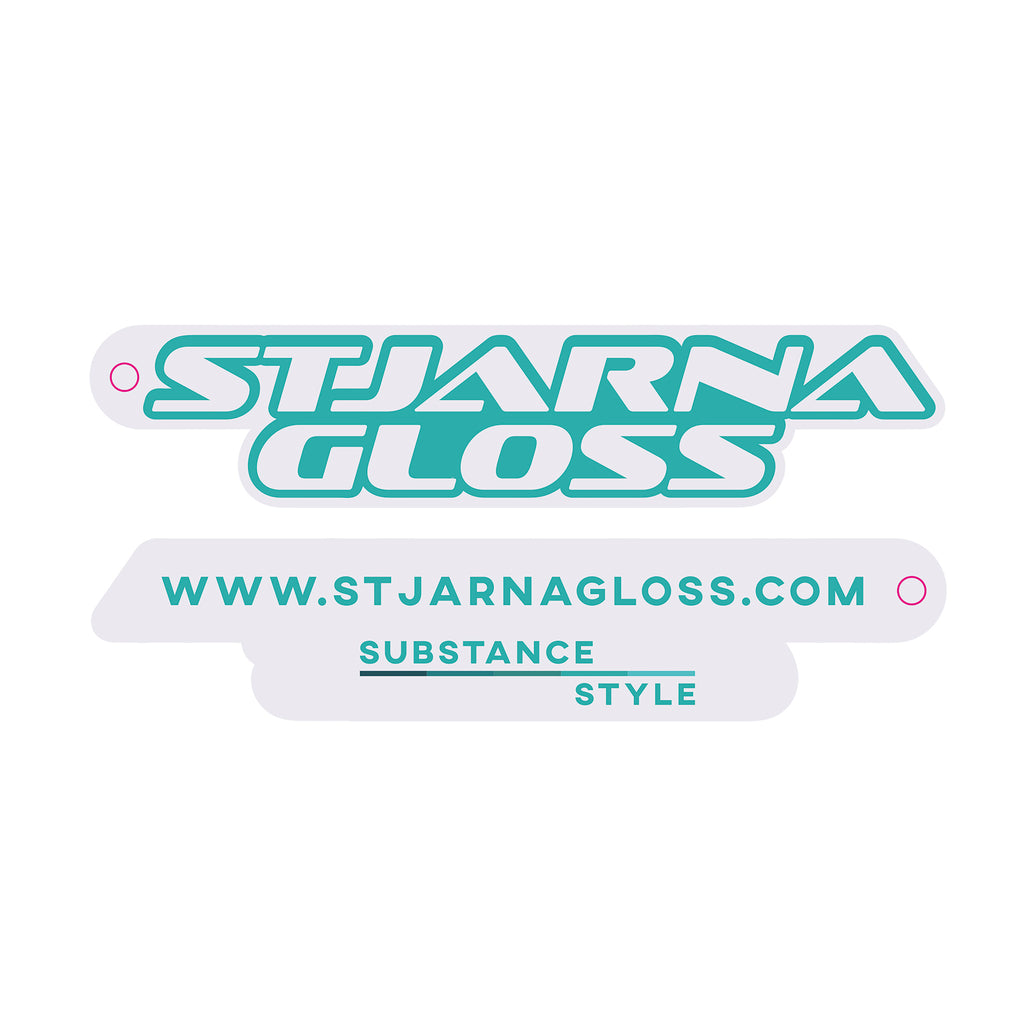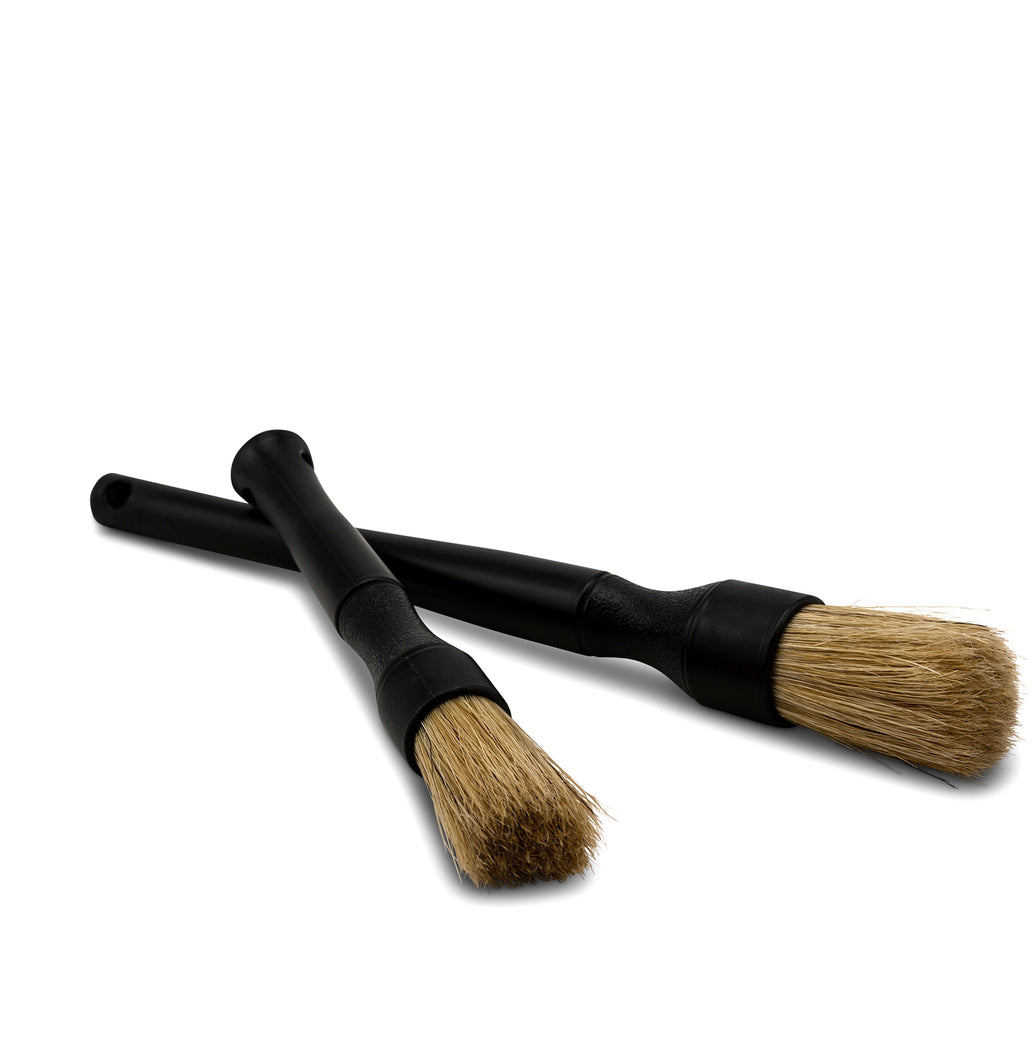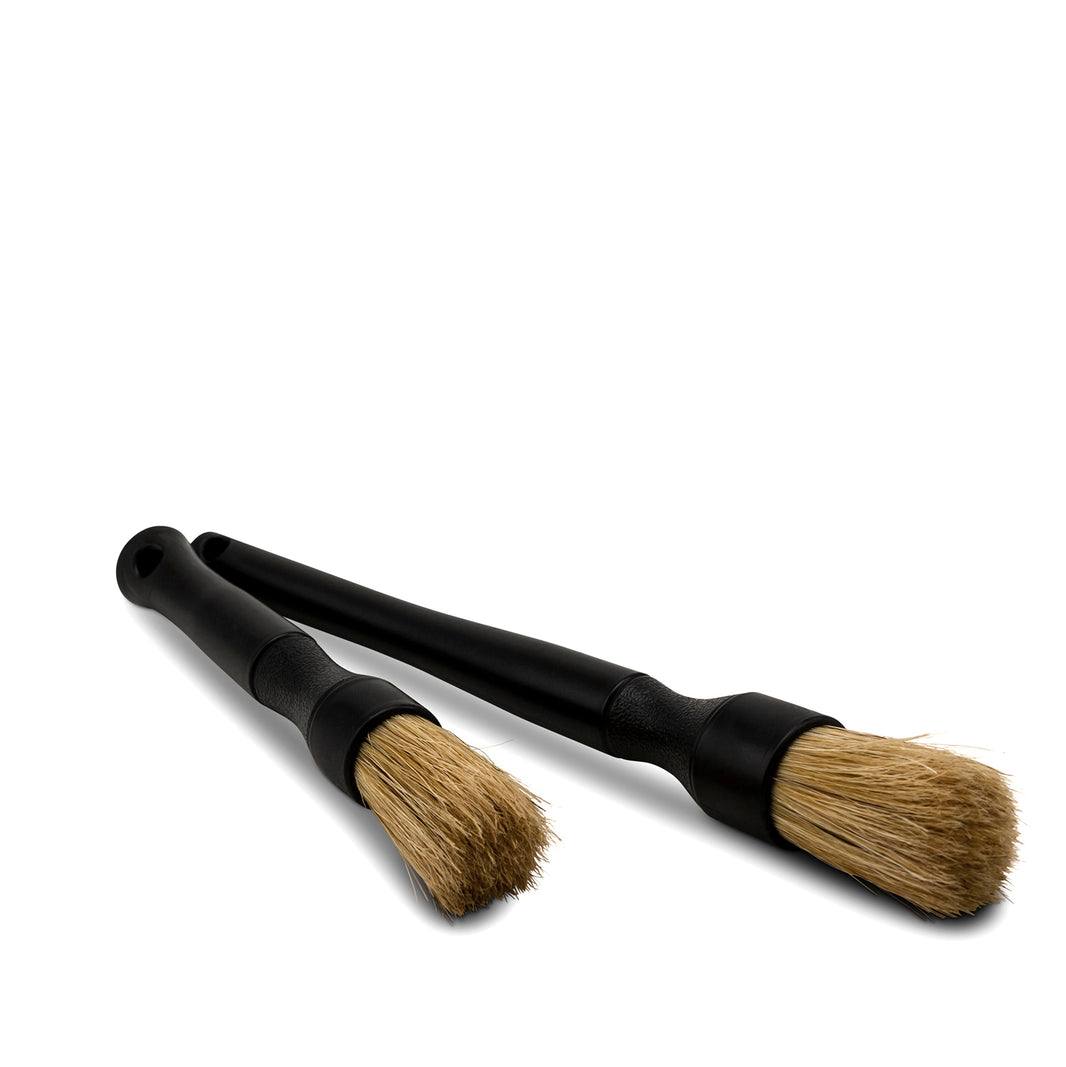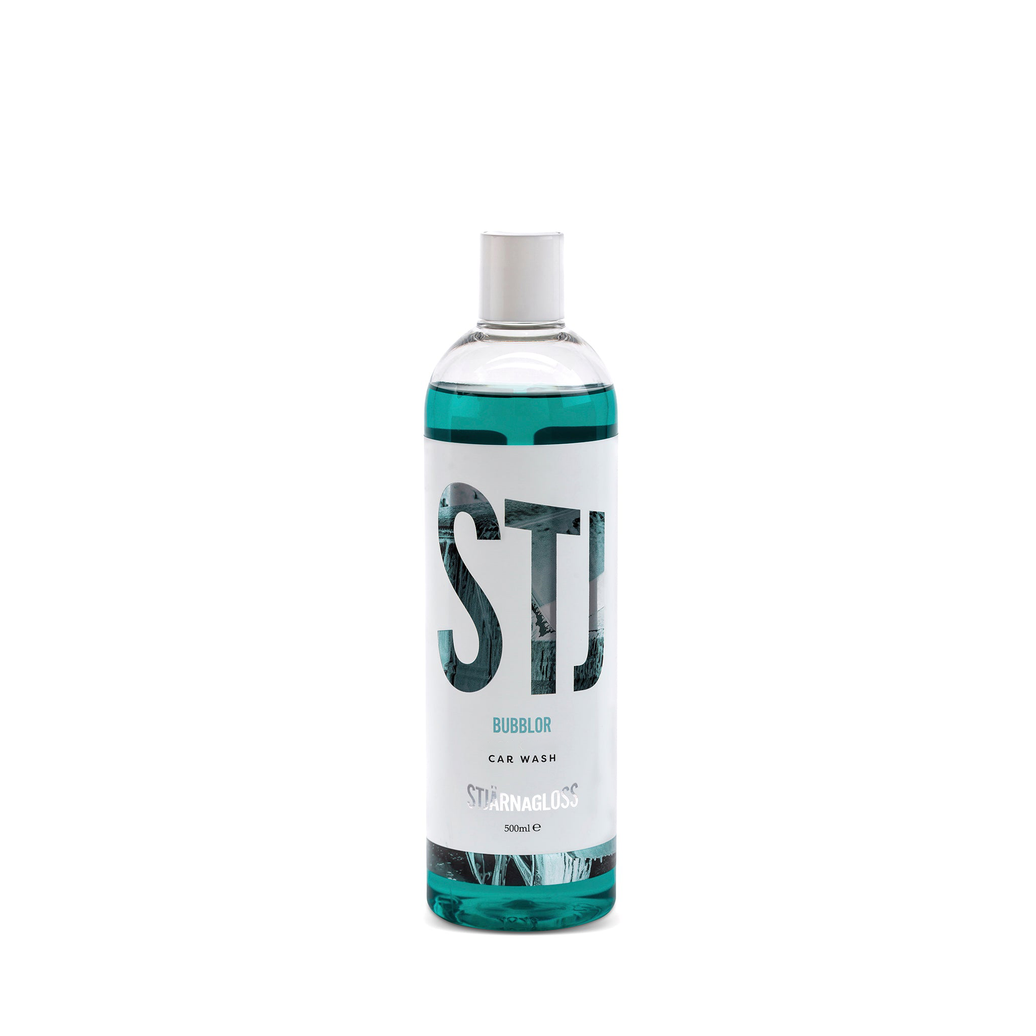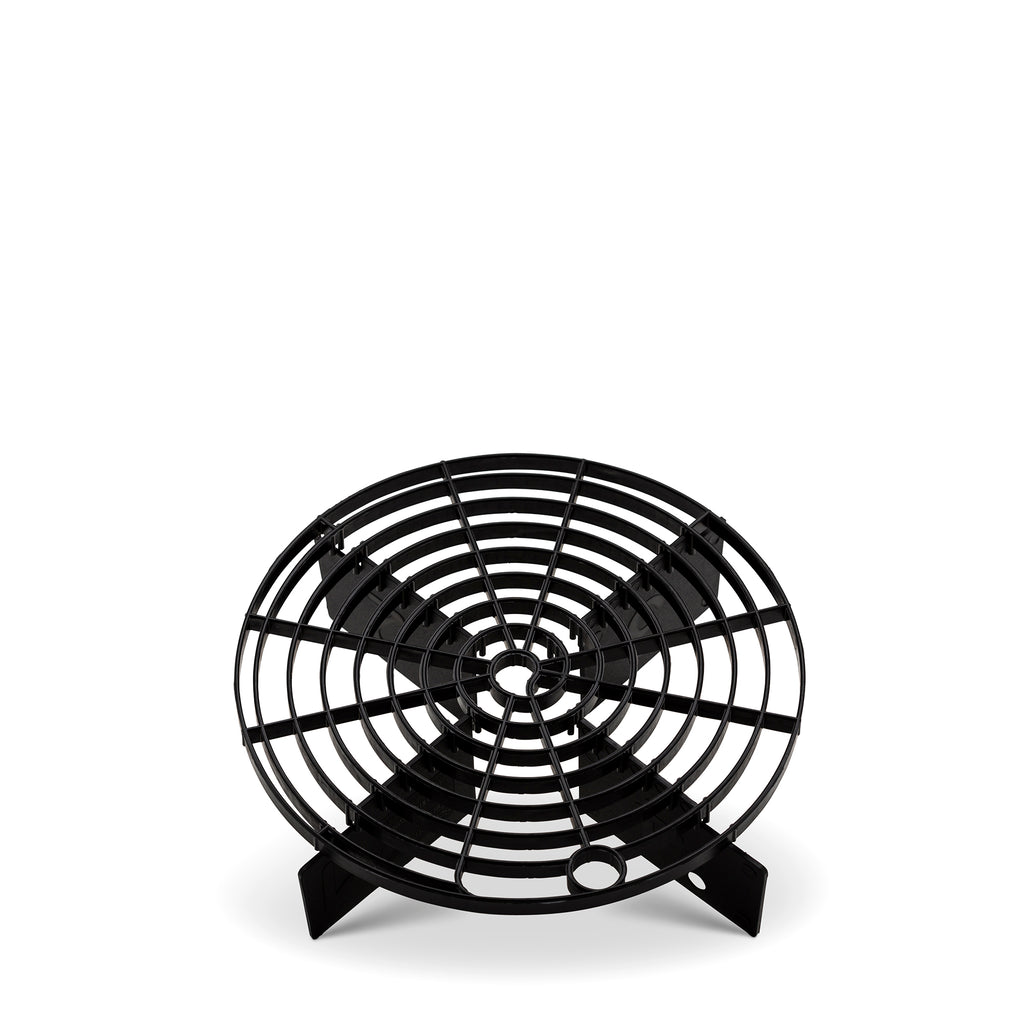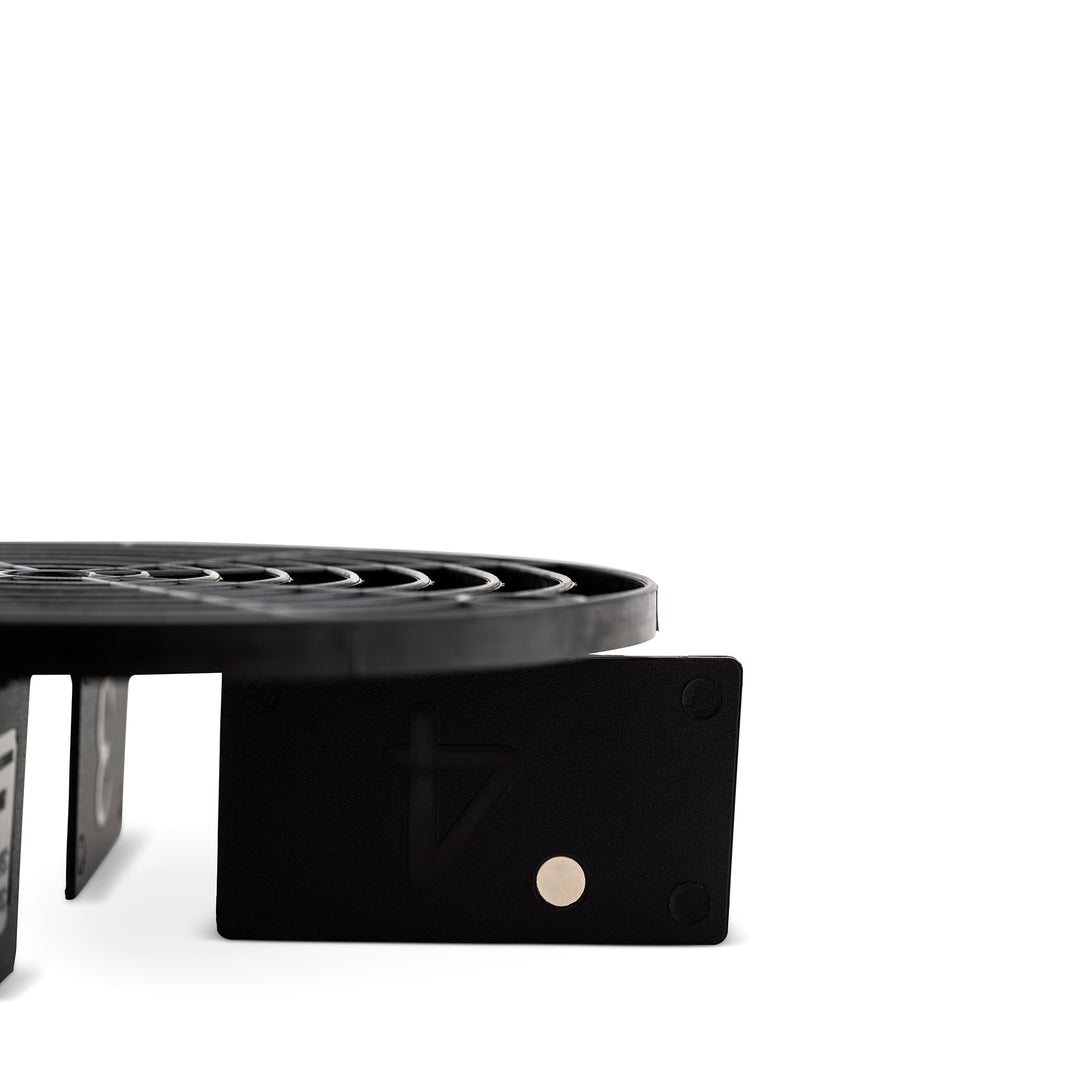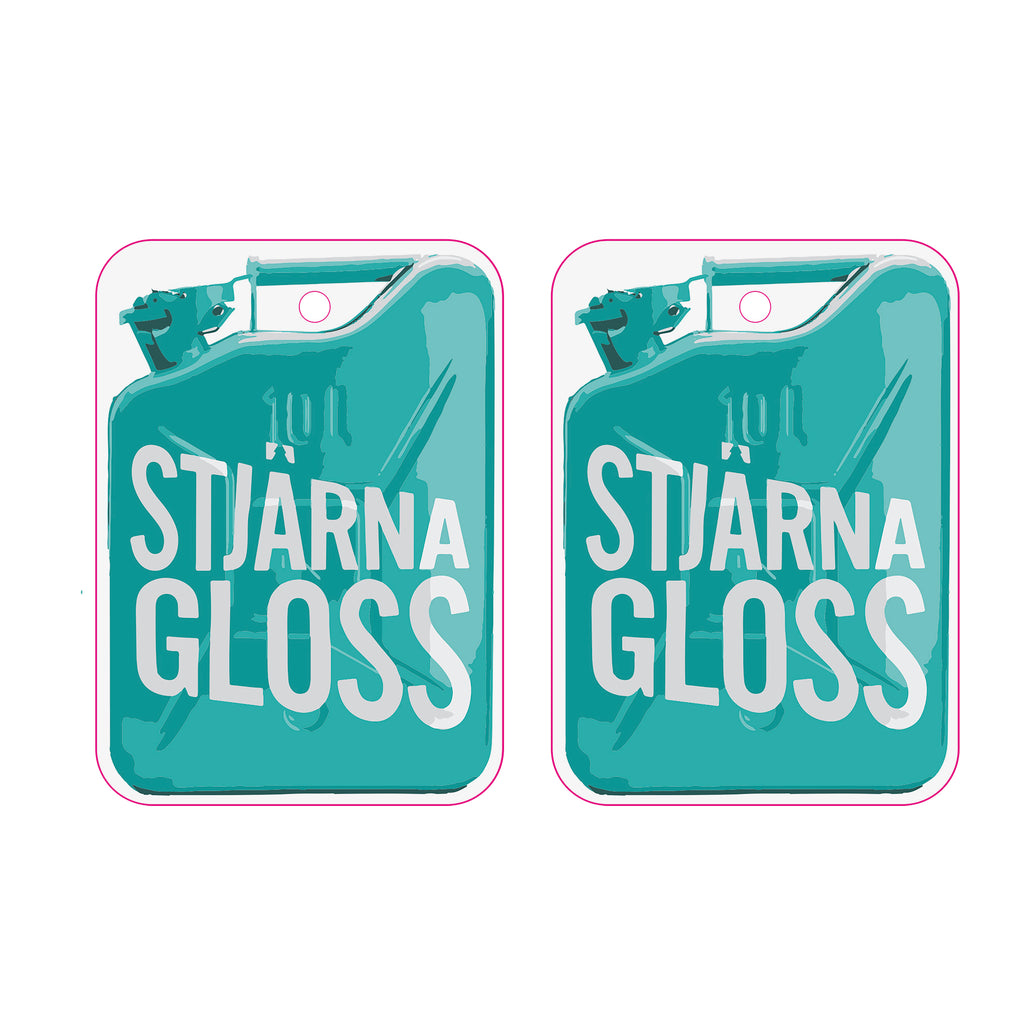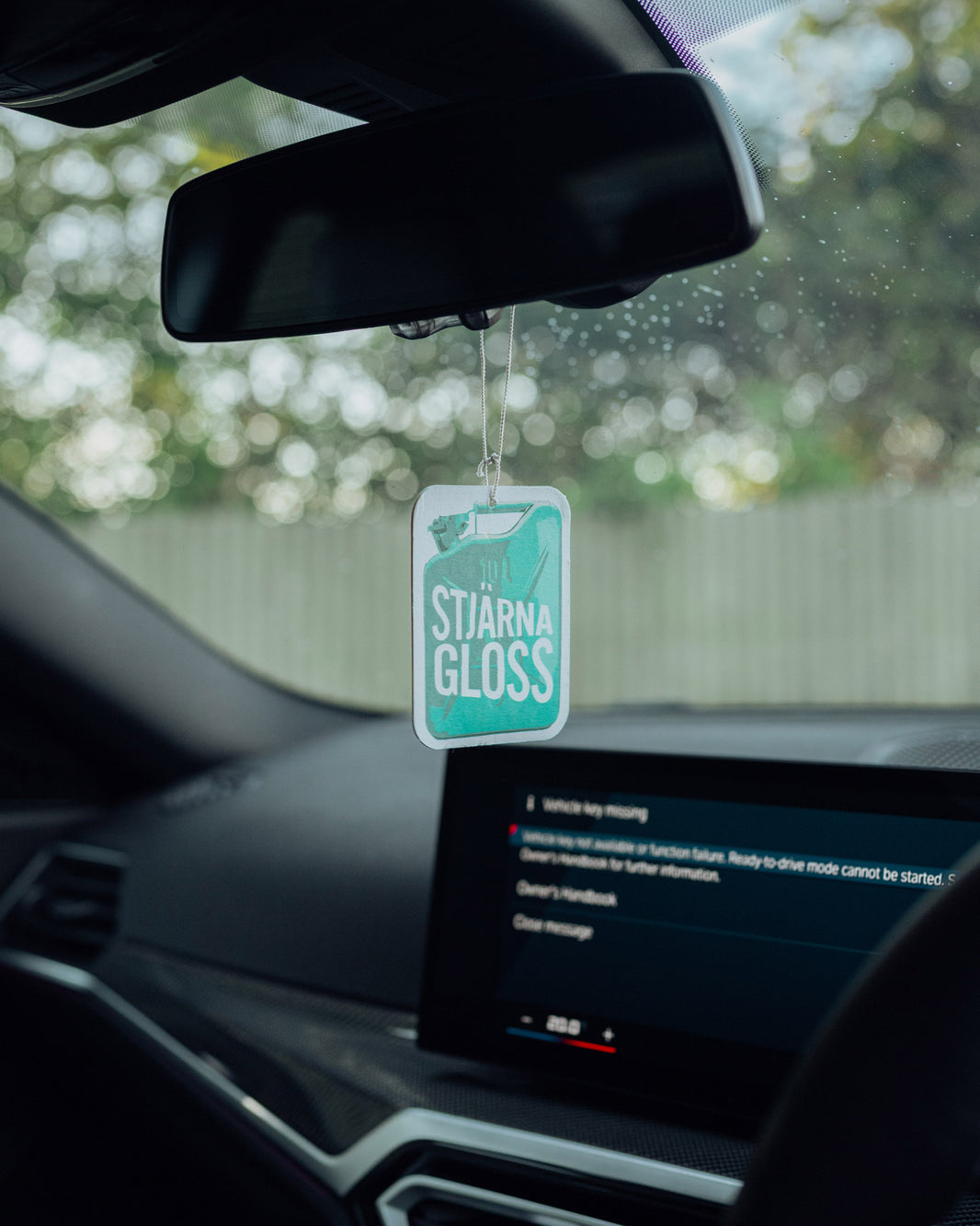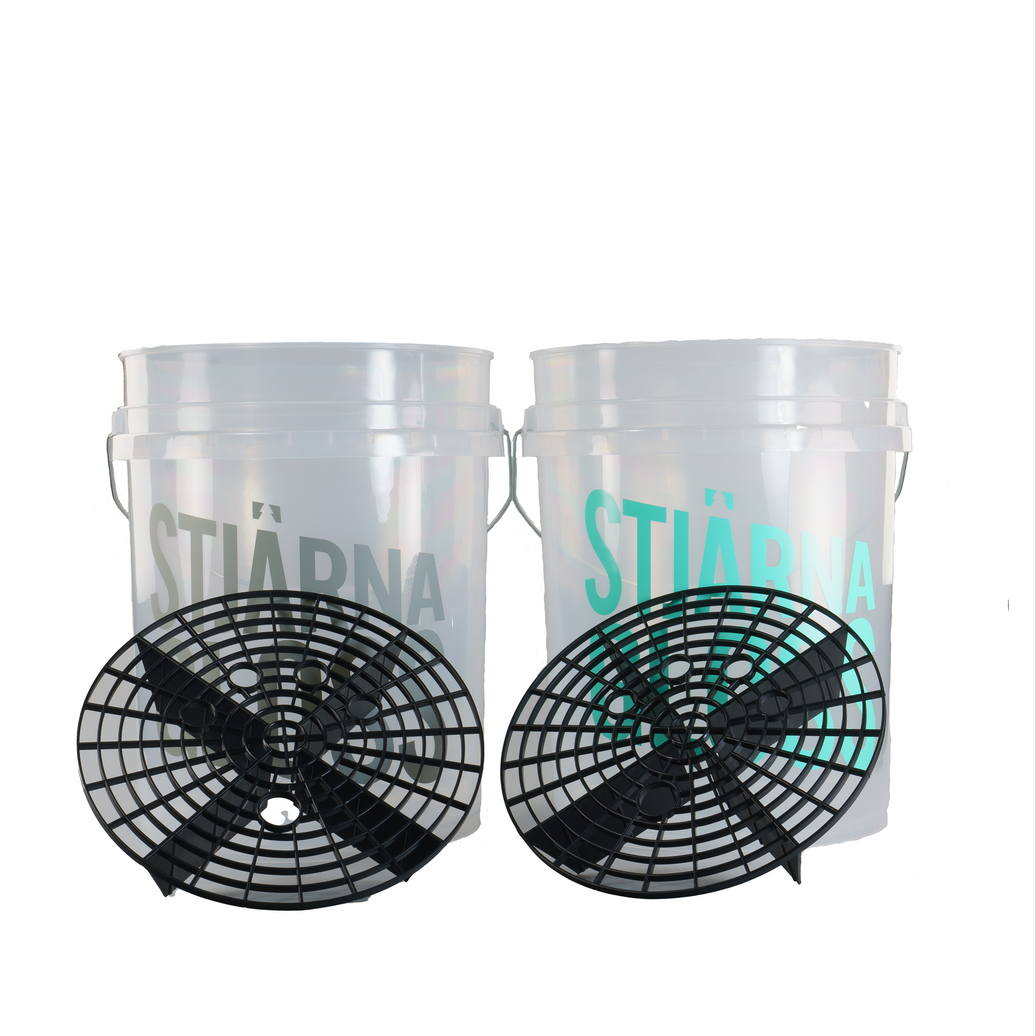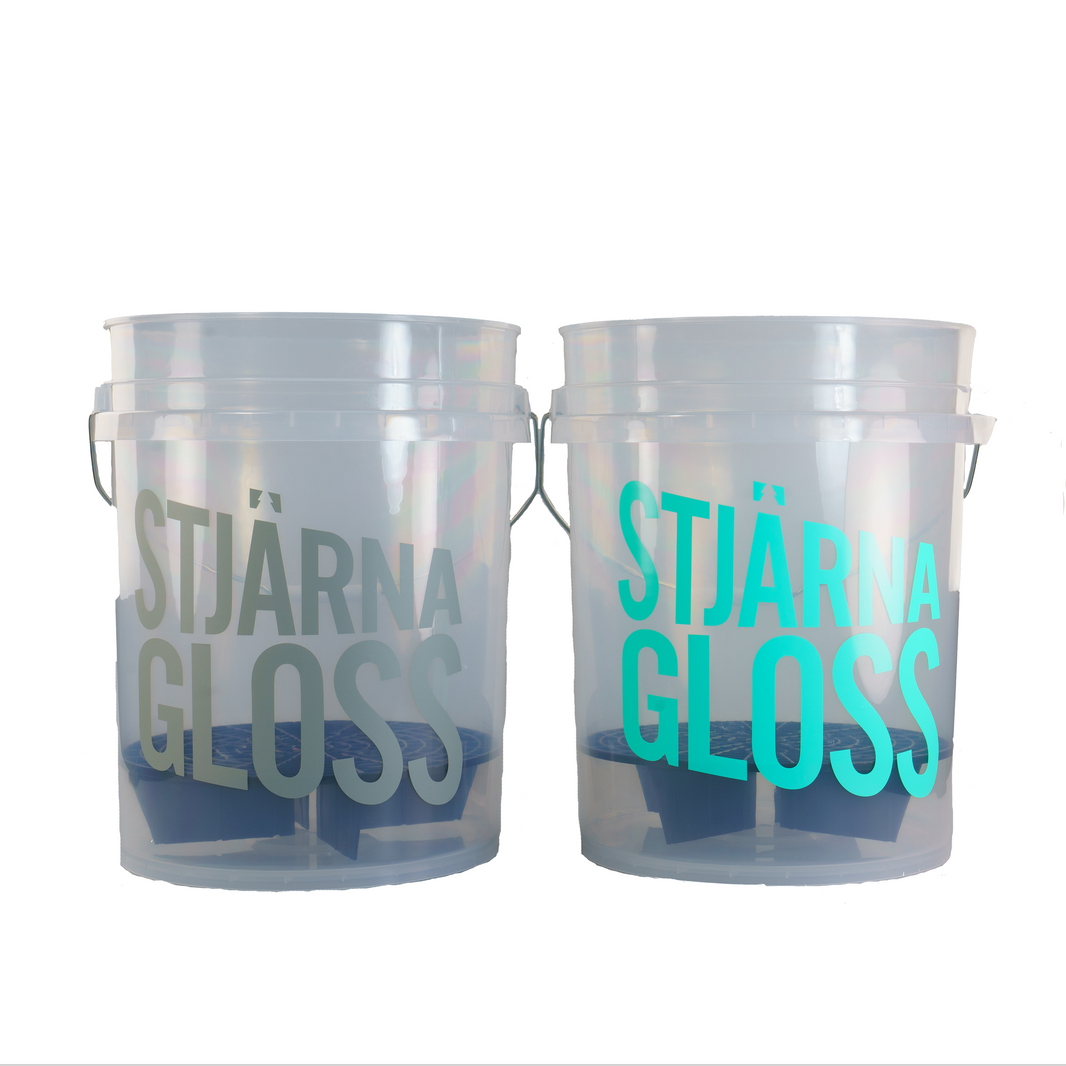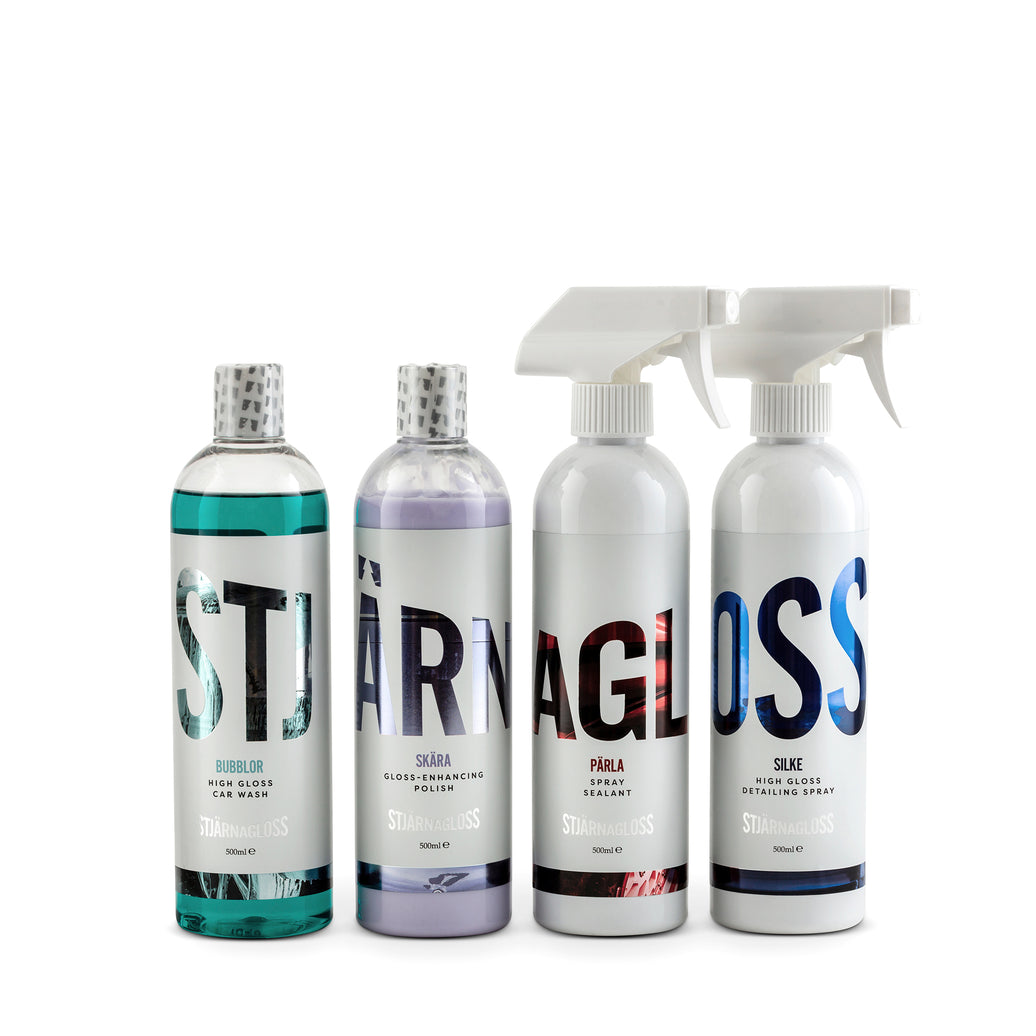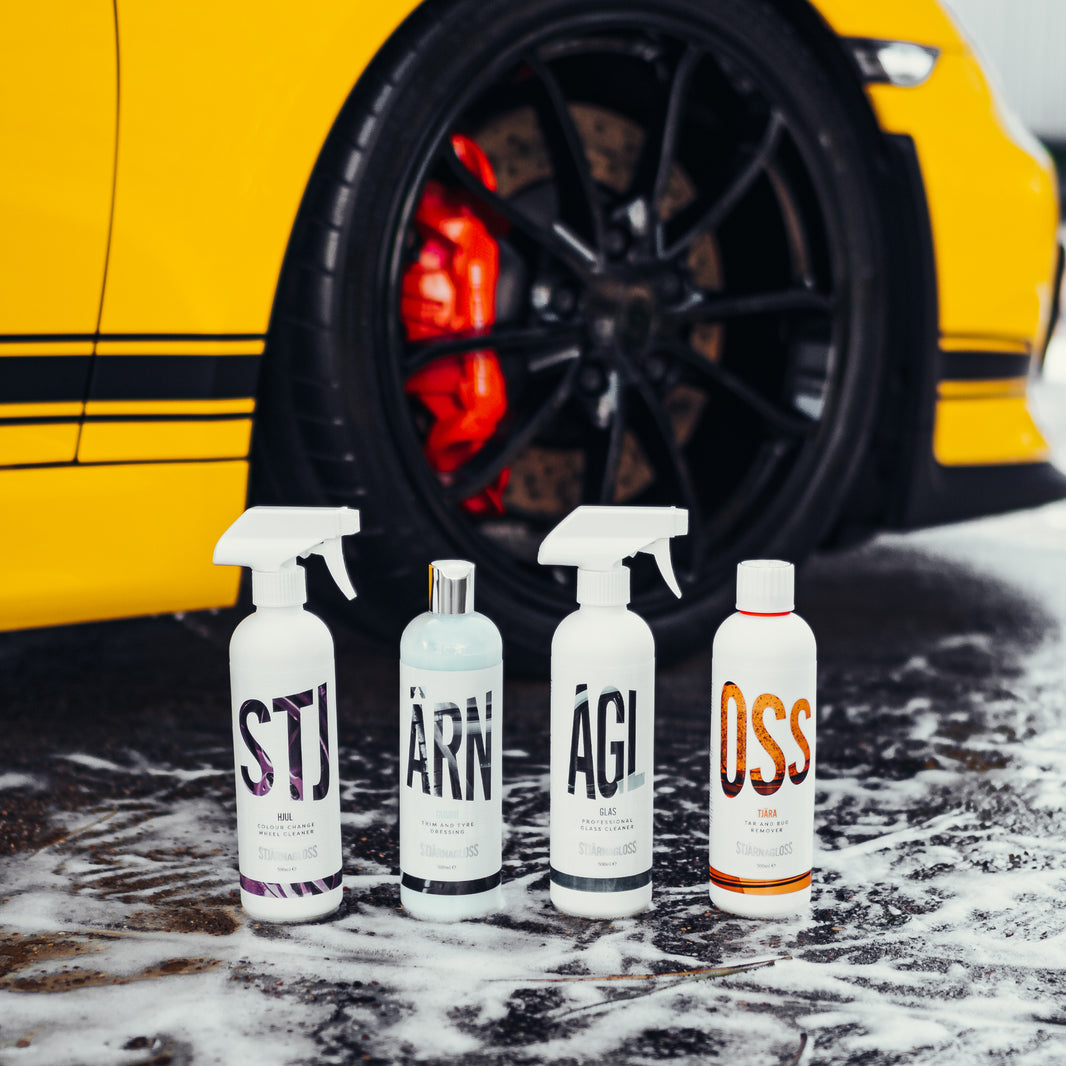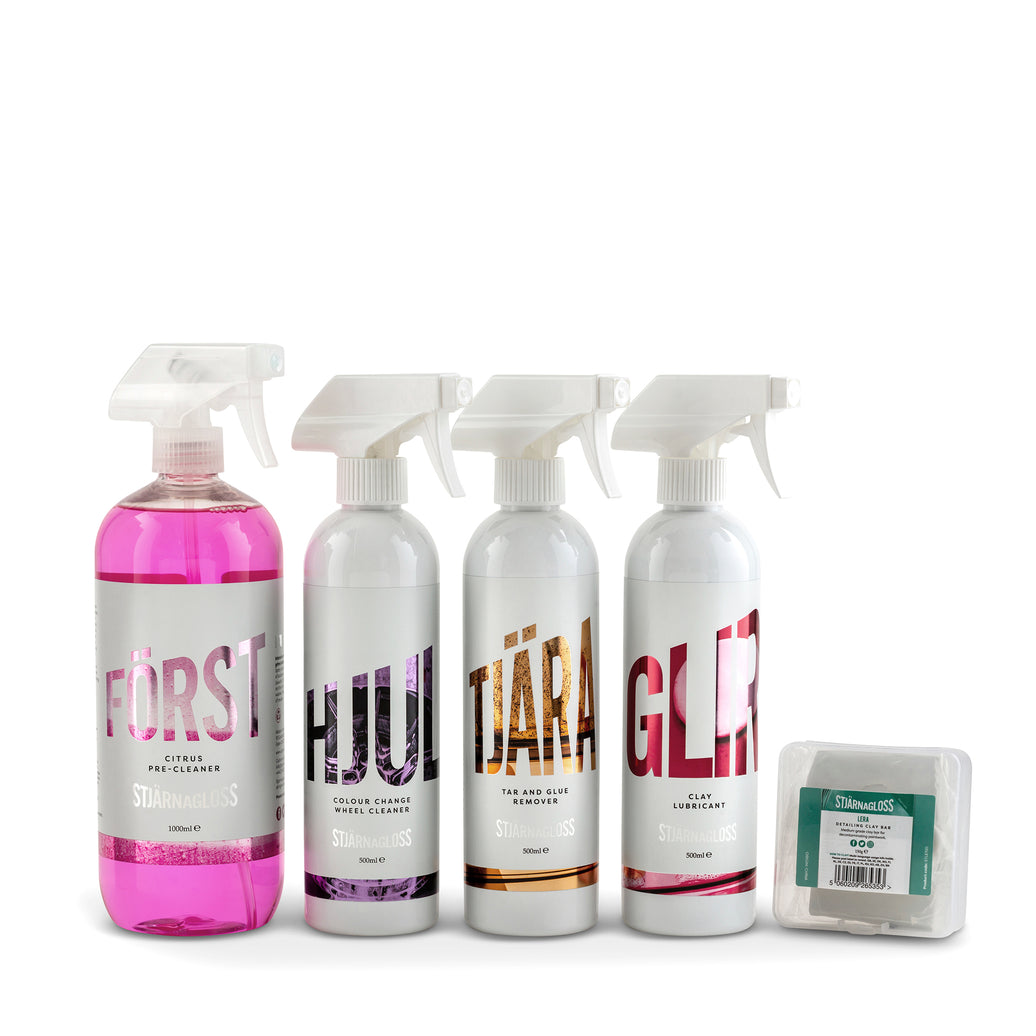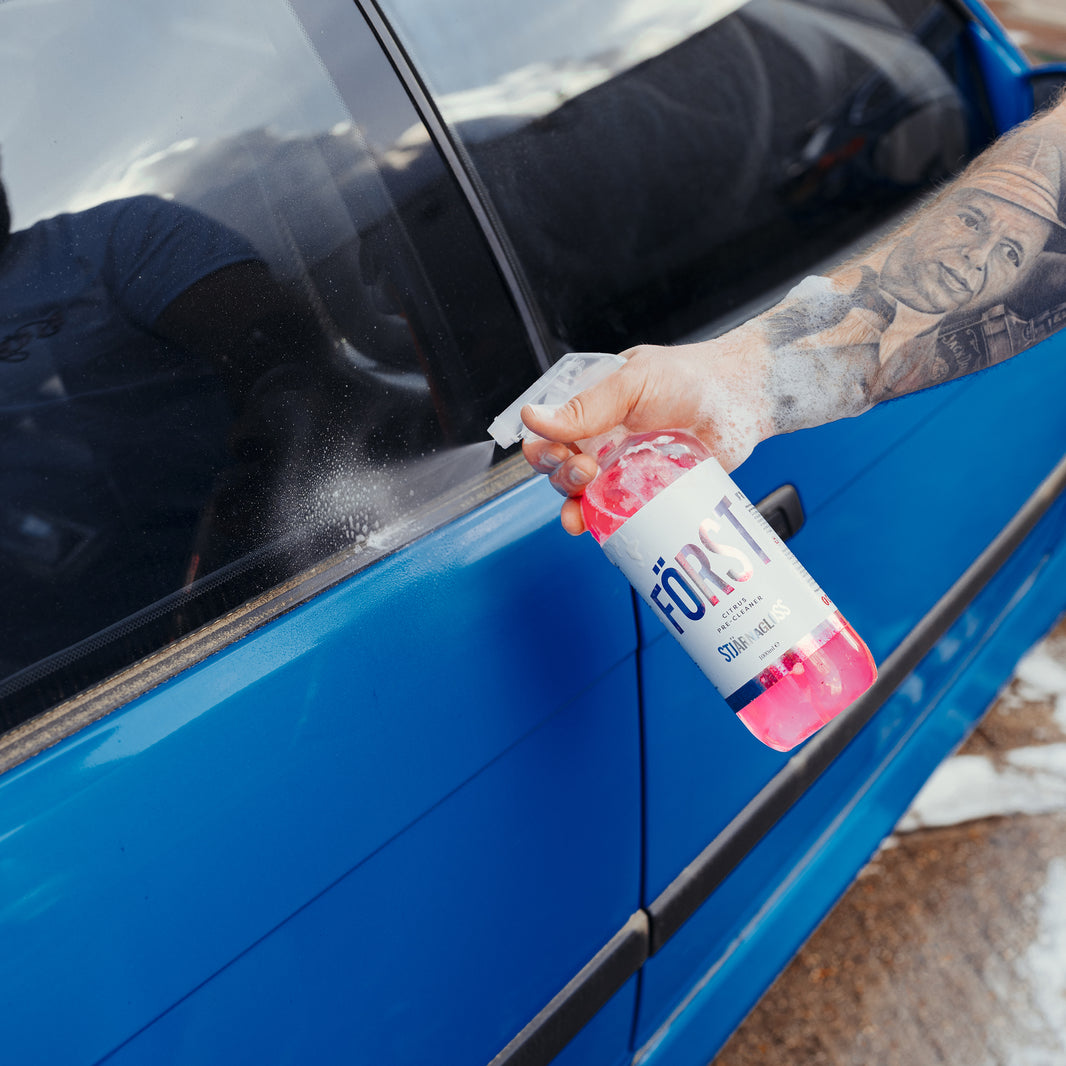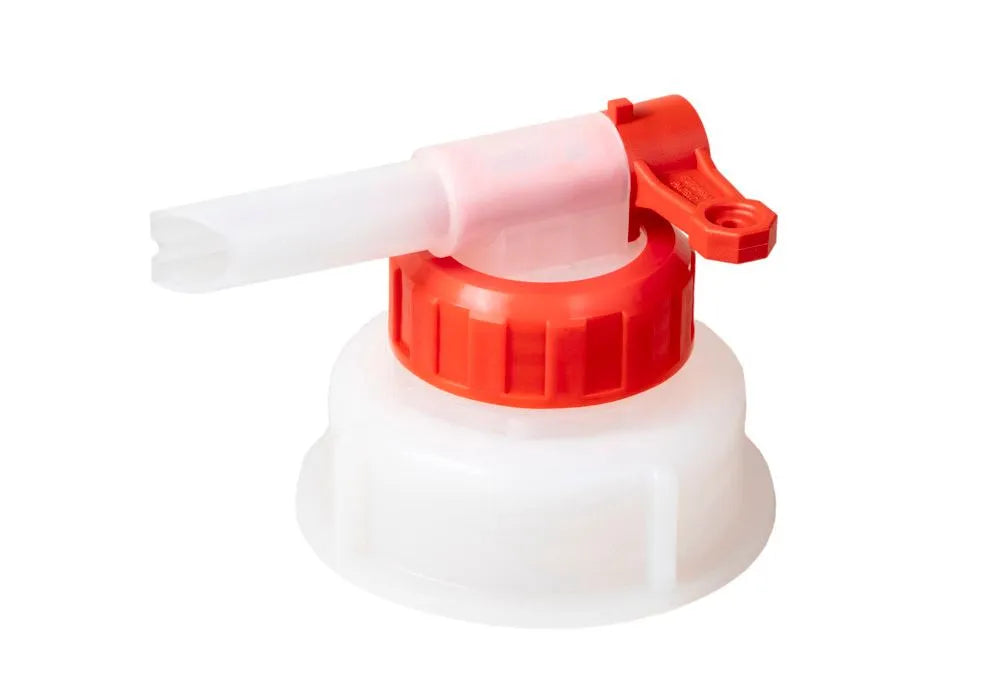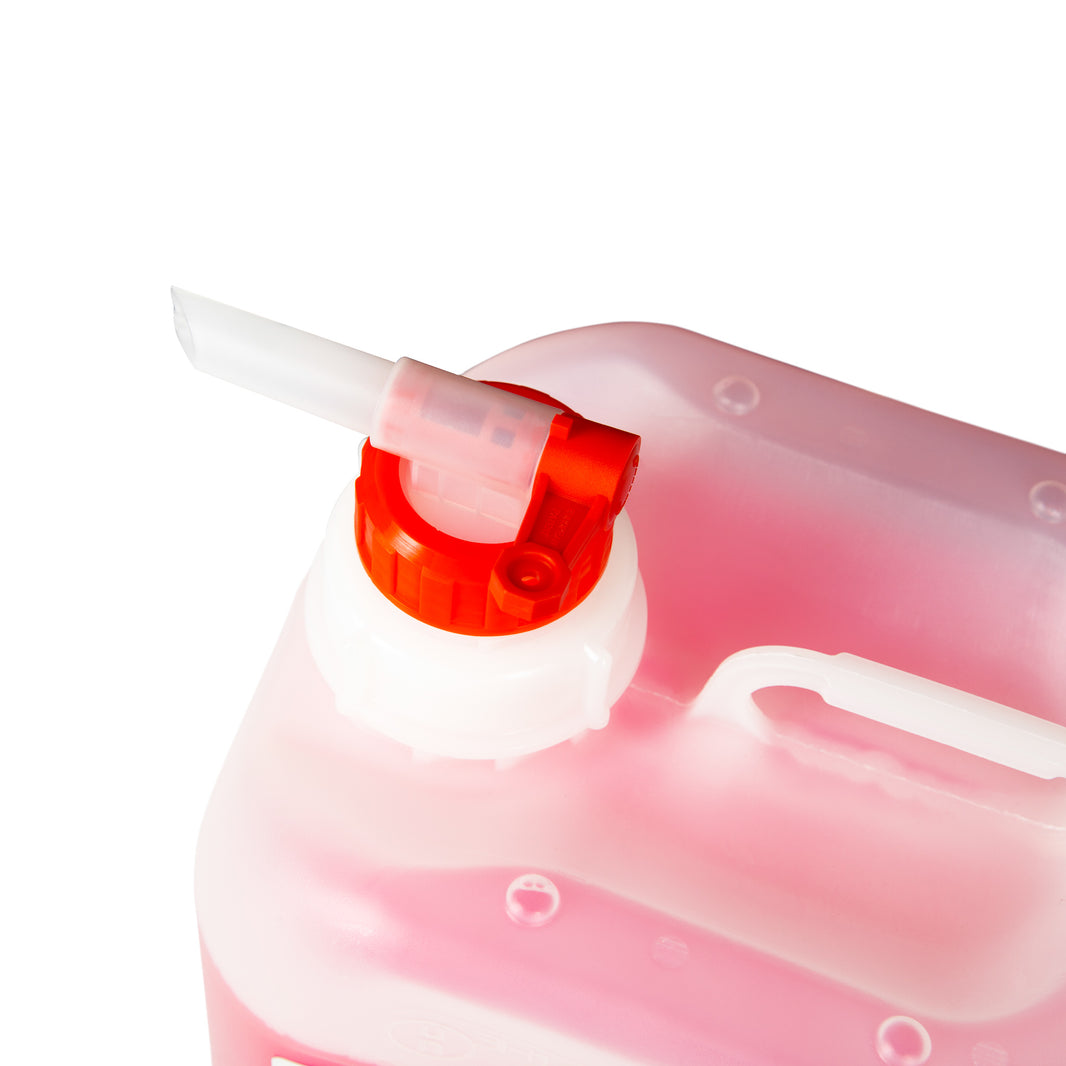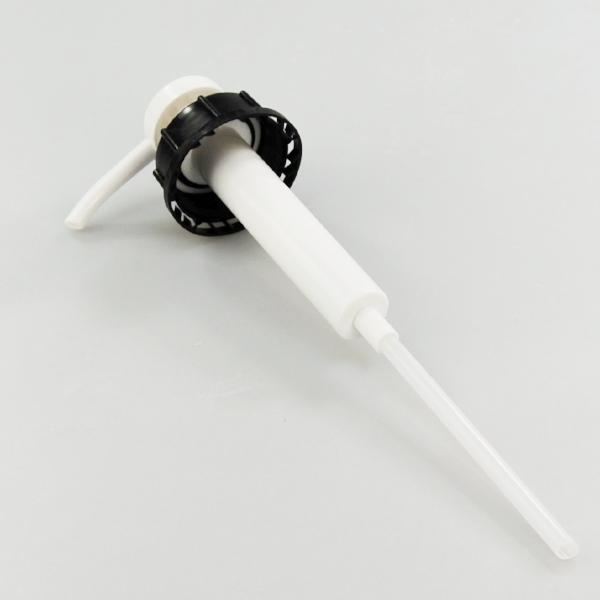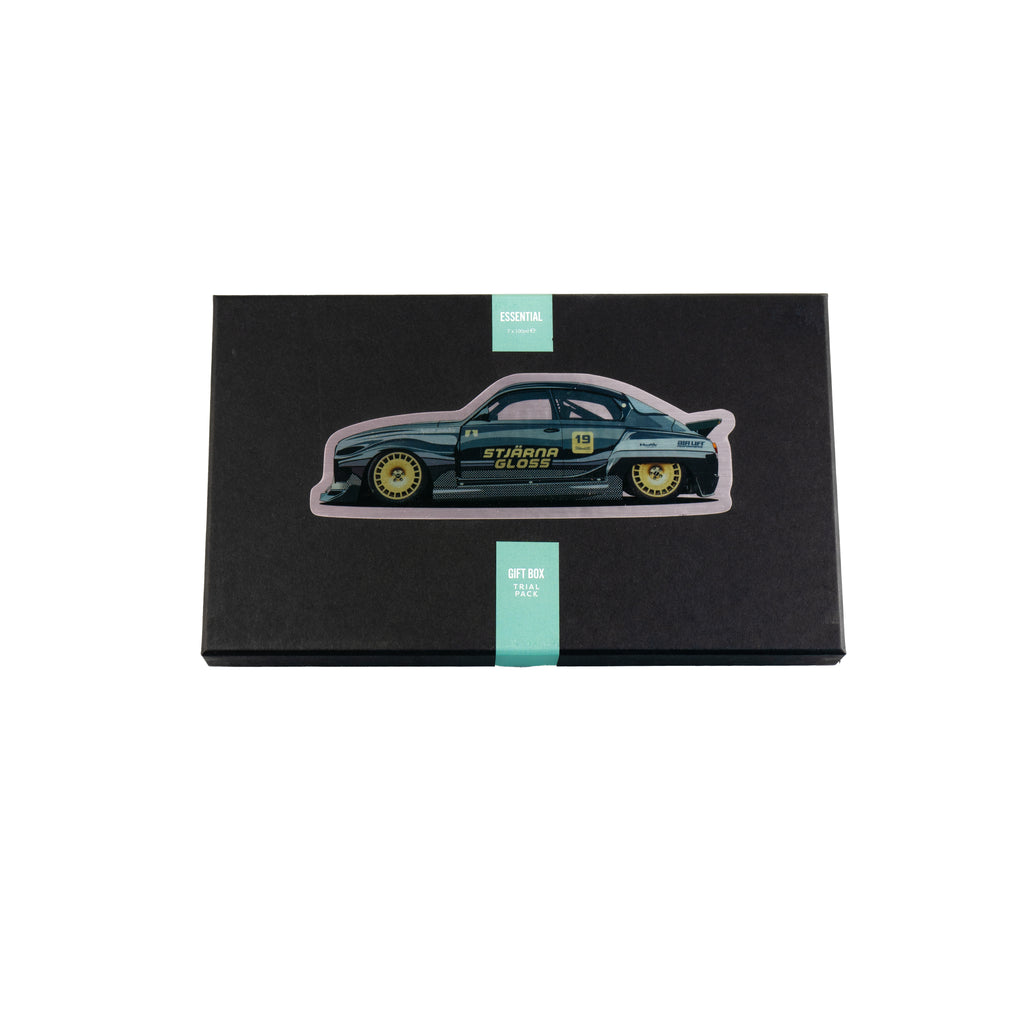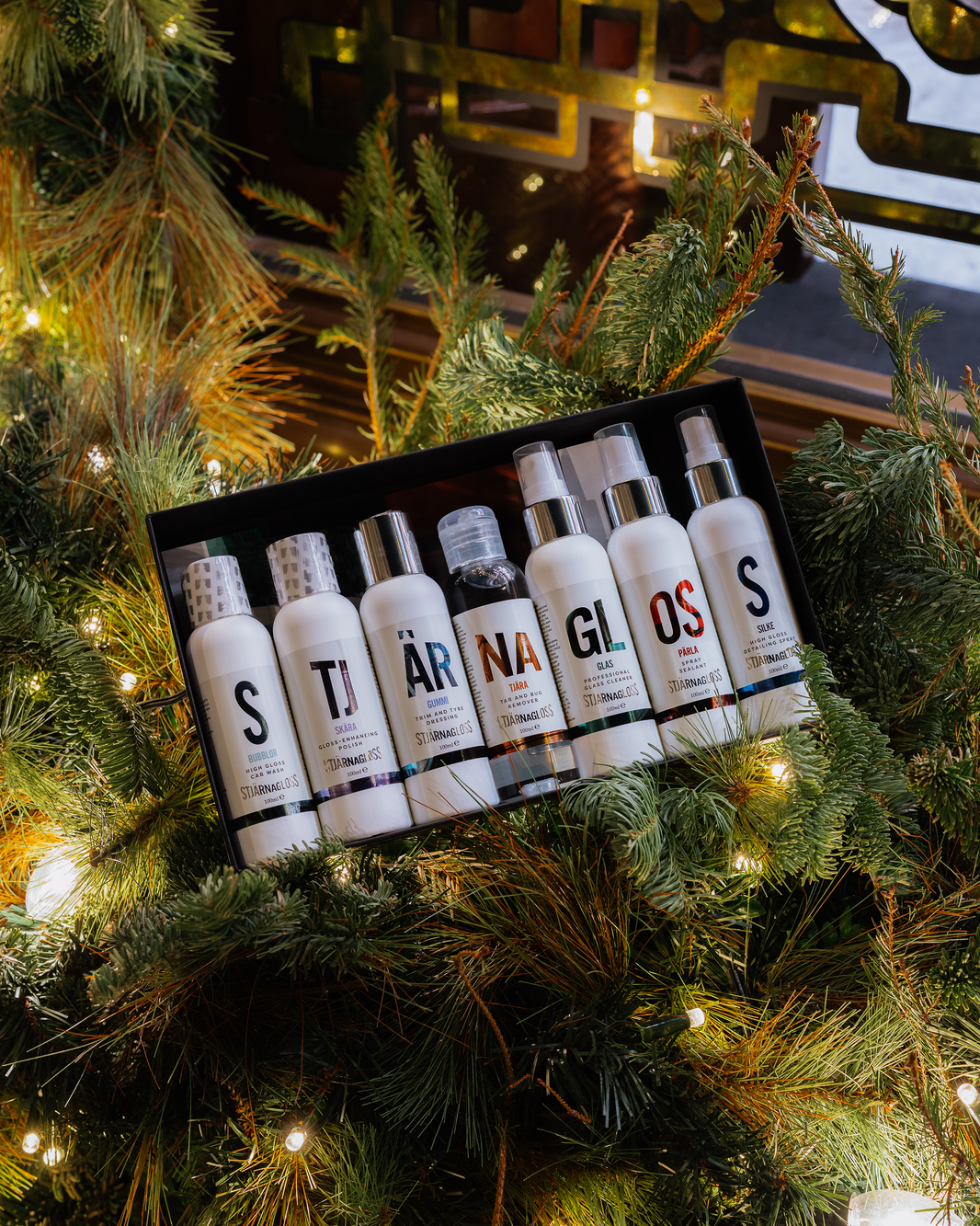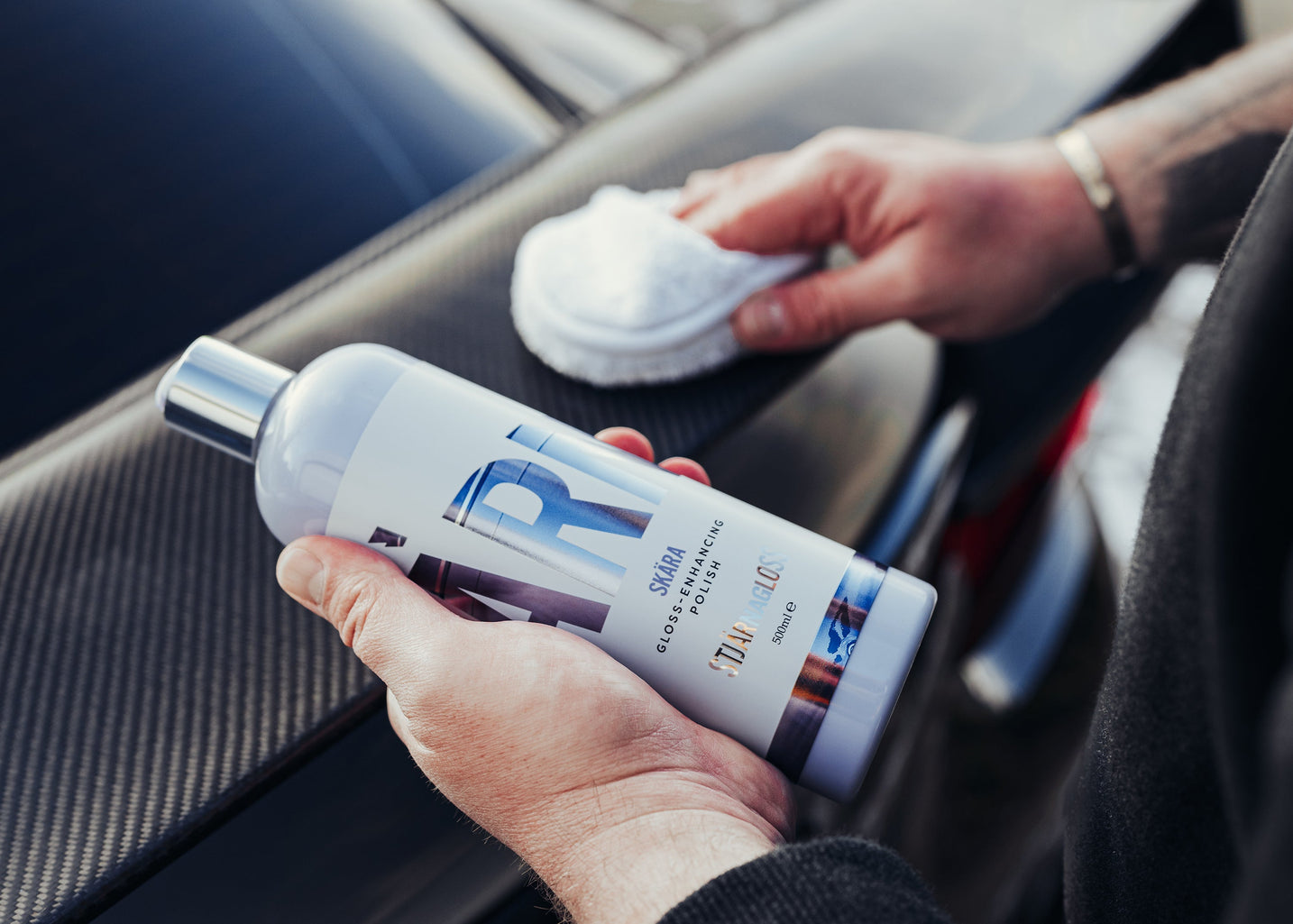What is gloss? How do we define it, and how do we achieve it?
There’s no other term in the detailing world and scene that is (mis)used as much as “gloss”. If we were to believe car care brands or manufacturers and what they promise us, they sell us “gloss in a bottle”. Heck, we do it too with Stjärnagloss Bubblor or Silke.
However, in this blog post, we want to be perfectly honest with you and, more importantly, want to provide you with the knowledge necessary to see behind those promises of glossy cars – and understand what gloss actually is and how it actually is created.
From a scientific point of view, gloss is defined by how well light rays which hit a surface are projected off that surface. 100% scientifically perfect gloss is created if a light ray hits a surface and then is bounced off this surface in the same angle that it hit it. A mirror in that respect has (almost) perfect gloss. That’s why you often read terms and descriptions like “mirror-like shine” in regards to car care products.
Scientifically speaking, everything that leads light rays to not bounce off your car’s paint in the same angle as they hit will reduces gloss. Things which reduce gloss can be dirt, dust, fingerprints, scratches, swirls, orange peel, and so on.
Whilst (new) car paint generally offers rather high levels of gloss, it’s not a mirror. And it’s especially not a mirror in regards to one very specific aspect: most car paints look absolutely fantastic if you look at it from a very shallow angle (from the side) and in indirect light. However, if you look at car paint straight on and shine a strong light source on it, that’s when you can really see if a specific car paint is in good condition or not, because that’s when paint defects become visible.
This is why all those silly photographs and videos in which people show you how “shiny” or “glossy” their cars look when they look at it from the side are utter nonsense. And the king of all this silly-ness and nonsense-ness are pictures people take from extremely shallow angles which show how the surrounding area is mirrored in their cars’ paints – and then try to tell you that those pictures proof how glossy their paint look, how glossy a wax is, or how well they polished these paints.
Fact is that you can make every car’s paint look shiny. Every single one! By taking a picture from the right angle and in the right light conditions you can make a totally scratched up and dirty paint look glossy, shiny, and reflective. So, don’t let anyone fool you. The best way to check for the condition of your car’s paint is by looking straight at it in a dark surrounding (garage) and then shine a very bright light source at it. This will allow you to see the real condition a paint is in. And if you want to “proof” how good your wax is at doing something, then tape off a section on your car’s paint, apply the wax only there, remove the tape and then show the difference in a 50:50 shot. Let us repeat once and for all: reflection and side shots say nothing about paint condition, the quality of your work or car care products. Nothing! Absolutely nothing! They only say something about you, and that’s not something nice…

The same accounts for promises by car care products and their respective manufacturers. If car paint is dirty or dusty, then removing this dirt or dust by just washing the car, then of course a car will look “shiny” and “glossy” – more so than before. In this respect, all car shampoos create “gloss”. However, car shampoos in themselves and by themselves can’t create gloss by reducing or removing paint defects and therefore improving the state a paint is in. No car shampoo therefore is really able to create gloss. Remember that you only use a few squirts of soap in a huge wash bucket so how should a car shampoo be able to contain enough fillers to effectively fill in light paint defects?
It’s a different and far more complicated story with products that you apply to your car like for example quick detailers, waxes, sealants, or ceramic coatings. And to understand this, we now need to talk about what decreases gloss: paint defects.
We introduced the different types of paint defects in previous blog posts: scratches, swirls, holograms, haze, and so on. Without overcomplicating things even further, let’s just go straight to the point: paint defects decrease gloss.
As said above, perfect gloss is created by a perfectly smooth and flat surface on which light rays bounce off of it in the same angle that they hit it. Paint defects introduce imperfections in an otherwise perfect, flat and smooth surface, leading light rays to bounce off in all kinds of angles.
Remember: paint defects are in fact “craters” in the paint surface. And that’s exactly why you can see paint defects better when you look straight at a car’s paint. The light rays from a strong light source (like the sun) that hit it are then bouncing off the “cliffs” of those craters, as they are “trapped” within these craters and bounce from “wall” to “wall”. If you look at the same paint from a shallow angle, the light rays don’t reach the inside of these craters and are therefore not reflected or bounced off. This is also the reason why you see paint defects better on darker paint types than on bright ones.
Knowing all of this, we can now come back to the question of which products actually are able to create gloss – or not. As we concluded above, what reduces gloss are paint defects. So the only way that car care products are actually able to create gloss is if they are capable of removing or at the very least reduce paint effects.
At this point, we need to distinguish between two different ways of reducing or “removing” paint defects:
- Abrasive products actually remove paint defects by flattening the paint (the clear coat). Things like polishes or compounds are such products.
- Products with filling capabilities reduce paint defects by temporarily filling up the craters with something, creating the impression of a flat surface.
So, the only way a car care product can actually and factually create “gloss” is if it either removes paint defects by abrasion or if it contains enough fillers to temporarily “cover” them up. Polishes and compounds usually remove paint defects, whereas glazes like Stjärnagloss Glasyr for example just fill them. AIOs (“all in ones”) or 3in1s like Stjärnagloss Skära do both at the same time.

All of this also means that on absolutely perfect, completely levelled, 100% defect-free paint, any product that you apply on top of your car’s paint will add a layer of something that – if it is not completely and totally translucent – will by definition decrease gloss as it will intervene with the light rays.
No car paint is realistically ever absolutely perfect, completely levelled, and 100% defect-free. In fact, most paint jobs from most cars today come from the factory with a certain degree of orange peel, and that’s intentional. Orange peel makes paint defects less visible (i.e. on dark paints), so paint with a certain degree of orange peel looks glossier for longer. Plus, the necessary process of removing orange peel is extremely time-consuming and expensive – which is why only luxury car makers like e.g. Rolls Royce go through that process on their new cars. Add dealer-induced scratches or swirls and you are confronted with even less perfect paint conditions.
So, at the end of the day, only polishing and paint correction and therefore polishing products – or extremely smart and versatile products like Stjärnagloss Glasyr or Stjärnagloss Skära – will be able to actually create gloss by removing paint defects. The less defects there are on a car’s paint, the glossier it will be. But because no car’s paint will realistically ever be 100% defect free, car care products like quick detailers, waxes, sealants or ceramic coatings will to some degree be able to create gloss – or at the very least the temporary illusion of it.
However, these effects will always be stronger and much more visible on uncorrected, badly swirled, oxidised, hazy and dull paint. Once you went through the time-consuming process of polishing and correcting your car’s paint, all you will realistically do by adding any form of paint protection afterwards is to “lock in” the level of perfection you achieved. If, and only if, a paint protection product is able to create even more gloss on polished and corrected paint, we will always only talk about the last 1-5%, the icing on the cake, the tip of the spear.
All of this is based on a very factual, objective, scientific way of looking at gloss. But that’s not the end of the story, is it? Because car care is and should also be about fun and emotions – especially with Stjärnagloss. So, by all means, if you think or feel that your car looks glossy after you washed or waxed it: so be it!
However, as soon as we talk about claims or promises in regards to gloss and shine in a business perspective – if someone wants to sell you something, be it a product or a service – then we must come back to a scientific, actual and factual, measurable way of gloss and shine. So, we encourage you to share this blog post in discussions about gloss, shine, or reflections to add some common sense and ground to these dialogues.
